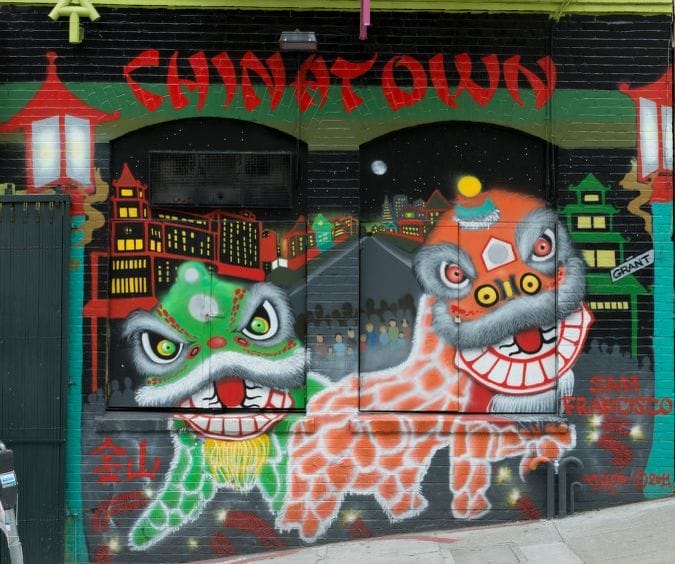May is Asian American Pacific Islander (AAPI) heritage month in Sonoma County and across the United States. May became Asian American Heritage month in 1977, and later became Asian American Pacific Islander month in 1991. It is a month commemorating the migration of immigrants and the completion of the transcontinental railroad in the mid 1800s even though the first Asian immigrants actually arrived in the US as early as 1587 when Filipinos first began migrating to California. There are many different cultures considered Asian American and Pacific Islander in the United States, with many nuances that are not reflected in the AAPI umbrella term. In fact, AAPI communities consist of approximately 50 ethnic groups speaking over 100 languages, with connections to Chinese, Indian, Japanese, Filipino, Vietnamese, Korean, and Hawaiian descent to name only a few. Today, we celebrate over 27 million people identifying as part of AAPI communities in the United States.
In the mid-1800s in Sonoma County, AAPI immigrants were majorly responsible for building wineries and railroads, making up 80% of the laborer population. Many of the wine caves dug by hand out of carved rock are still in use today for example at Buena Vista Winery in Sonoma Valley. Between 1856 and 1869, AAPI communities planted most of Sonoma County’s 3.2 million grapevines. These immigrants during this time would become indispensable building roads, clearing land for farming, and other horticultural and physical work that required considerable skill and technique.
Asian American and Pacific Islanders are an integral part of Sonoma County’s history, even though California and Federal legislature discriminated against Chinese immigrants specifically in the later half of the 1800s. Several measures were passed including requiring special licenses, labor rules preventing naturalization, the Page Act of 1875, and in 1882, the federal Chinese Exclusion Act was signed into law banning further immigration from China. It was during this time and into the early 1900s in Sonoma County that a movement to forcibly remove the Chinese population dropped the population from 1,145 in 1890 to fewer than 200 in 1930. In the mid-1900s, the United States also passed legislation discriminating against the Japanese American population as a result of World War II. Japanese Internment camps were created with devastating outcomes for those imprisoned. These are only a few of the many examples of where AAPI communities have been harmed in the past that represent historical trauma that affects communities still in present day.
Over 24,000 people in Sonoma County are now represented by AAPI communities. The Human Development Index (HDI) in Sonoma County according to the Portrait of Sonoma County data released in 2021 shows a slight decline from 7.10 in 2012 to 6.86 for Asian communities. HDI is a measure of health, education, and income calculated for various populations in California, and Sonoma County as a subset of this data. Variations in racial data are shown where Whites and Latinos experienced gains during this time, while Black and Asian populations experienced similar decline rates. Unfortunately, this data is not all encompassing and still has work to do in terms of capturing a holistic view of all races in Sonoma County, but do bring up interesting generalizations about quality of life experienced by different communities and sub-geographies. We have unfortunately seen a rise in Anti-Asian sentiment amplified across the beginning of the Covid-19 pandemic being mediated and called out by Anti-hate groups. In a Press Democrat article, Bodega Bay resident Jon Yatabe, 83, said he fears the violence we are seeing in recent days shows that the county has not progressed far enough away from the kind of racism that led to the internment of the Japanese during World War II. Examining this brutal history is essential in further preventing these atrocities and others toward non-white populations if we don’t keep equity, inclusion, diversity and justice as key values in the American melting pot.
This month (and every other month this year), Russian Riverkeeper stands with the many AAPI communities that comprise the Russian River watershed. If you would like to learn more about AAPI heritage and history in Sonoma County, our local library is rich with historical resources to check out. Additionally, Elizabeth Escalante, a first-generation Filipina American and a representative of the AAPI community in Sonoma County, and Jack Ding, born in China and a Sonoma resident who is also the first Asian American to take a seat on the Sonoma City Council will be presenting via Zoom at 6:30 p.m. on Monday, May 24. They will discuss AAPI experiences in Sonoma County and how our community can support them. For any questions or the meeting’s ZOOM link email contact@svdems.org. Additionally, if you would like to support our AAPI community businesses, you can find a collection at sonomacounty.com. We hope you are able to take time to explore the rich history of AAPI communities in Sonoma County further, and celebrate being stronger together.






